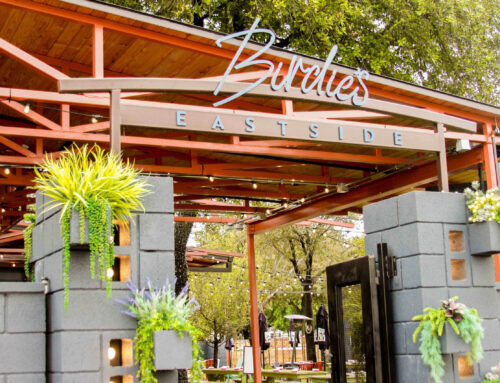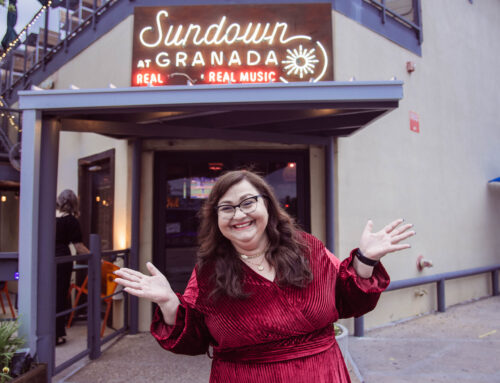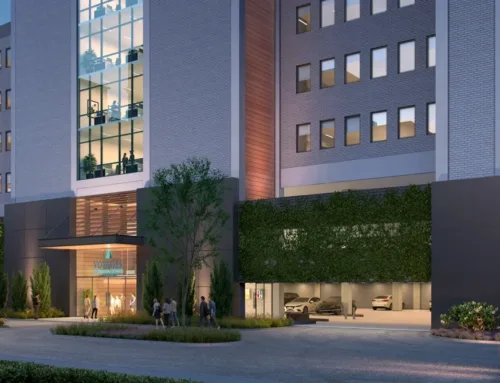Once a year, the president of the United States delivers a speech known as the State of the Union. The address is prescribed in Article II of the U.S. Constitution, which states that the leader of our country should “from time to time give to the Congress Information of the State of the Union, and recommend to their Consideration such Measures as he shall judge necessary and expedient.”
The Advocate is not held to such a standard. But we thought we’d share how things are going in our neighborhood anyway.


News of shootings, people found dead in vehicles and bodies floating in White Rock Lake generated plenty of attention last year. But those are outliers when it comes to crime trends.
To get a handle on the acts committed in our neighborhood in 2022, we considered Dallas Police Department data from the five sectors that cover the bulk of Advocate’s neighborhood delivery areas:
- Sector 110: Junius Heights, Munger Place, Hollywood/Santa Monica, Mount Auburn
- Sector 140: M Streets, Lower Greenville, Lakewood Heights, Swiss Avenue, Cochran Heights, Vickery Place
- Sector 150: Old East Dallas, Deep Ellum
- Sector 220: Reinhardt, Casa View
- Sector 230: parts of Lakewood, Forest Hills, Little Forest Hills, Lochwood, Old Lake Highlands and Casa Linda
Simple assault occurred most often in sectors 110, 230 and 220. For sectors 140 and 150, theft from motor vehicles was the most common crime reported, and for sector 140, motor vehicle theft was the second-most common.
Of the five sectors, sector 110 had the fewest recorded crimes overall, at 2,367. Sector 150 had the most, at 4,561. All but sector 220 had more crimes in 2022 compared to 2021.
Aggravated assault was among the top five types of crime committed in sector 220, but in the other neighborhoods, it wasn’t as common.
Overall, reported crimes committed last year in these five East Dallas sectors comprised 16.1% of total crimes in Dallas, according to police data.

As if the supply chain issues weren’t bad enough, businesses, contractors and individuals throughout Dallas have complained about the permitting system. Delays were really cramping their style.
But District 9 City Council member Paula Blackmon, who was one of the people tasked with finding solutions to the problem, says things are getting better.
In June, the city hired Andrew Espinoza to lead Development Services. There were 58 new hires in the department last year, which exceeds the 42 lost to attrition, and the department will continue recruiting and onboarding, Blackmon says.
Upgrades have also been made to relevant technology, including the ProjectDox software, an electronic system used to submit and process permits.
But Development Services has also noticed that some of the problems can be traced back to members of the public who fail to complete applications properly. To remedy this, the department is pursuing public education and outreach. Staff have been hosting monthly pop-up events at the Oak Cliff Municipal Center, where people can obtain permits for small projects and repairs. These pop-ups will continue throughout the year, along with a “lunch and learn” series, where staff explain development topics.
Key metrics also show signs of improvement. In the last quarter of 2022, the department was issuing more single-family residential permits than were being submitted, though the number of permit applications was decreasing. Over the same period, Development Services was reviewing applications faster and within its 15-day goal more often, according to Espinoza’s presentation at a recent Government Performance and Financial Management committee meeting.
“I think what’s happening as a whole is that there’s better communication and there’s awareness on the city’s part that we need to fix this at the staff level and not just at the council level,” Blackmon says.

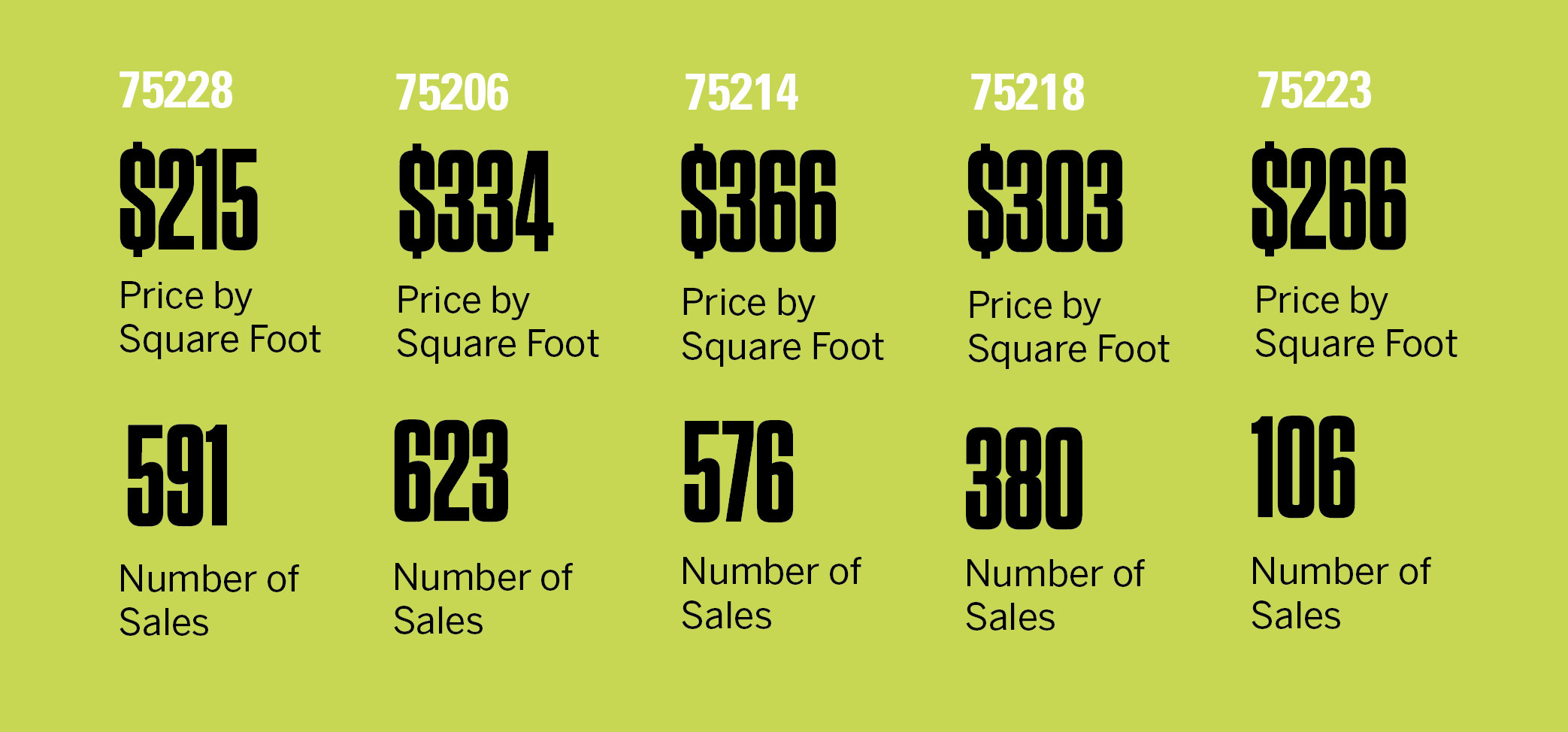
There were fewer home sales in 2022 than in 2021 across the ZIP codes in our coverage area: 75206, 75214, 75218, 75223 and 75228. In 75223, only 14 fewer homes were sold in 2022, but in 75206, 228 fewer homes were sold.
Consider a longer time span: In 75206, 75214 and 75218, the number of homes sold decreased from 2013 compared with 2022. But in 75223 and 75228, the number of homes sold in 2022 was slightly higher than the number of homes sold in 2013.
With the exception of 75223, homes in our neighborhood sold faster on average in 2022, compared to the previous year. But when 2022 data is compared to 2013 data, the numbers are much more stark. The amount of time it took for homes in East Dallas to sell was about half as many days last year compared to 2013.
Homes in our neighborhood are becoming more expensive, too. That’s particularly true in 75228, which includes Casa View. In that area, the price per square foot of homes was nearly 50% higher in 2022 than in 2018. Even in the ZIP code that includes Hollywood/Santa Monica and Mount Auburn, which saw the area’s smallest increase in price per square foot, the value has increased $49 per square foot, or about 22%, since 2018.

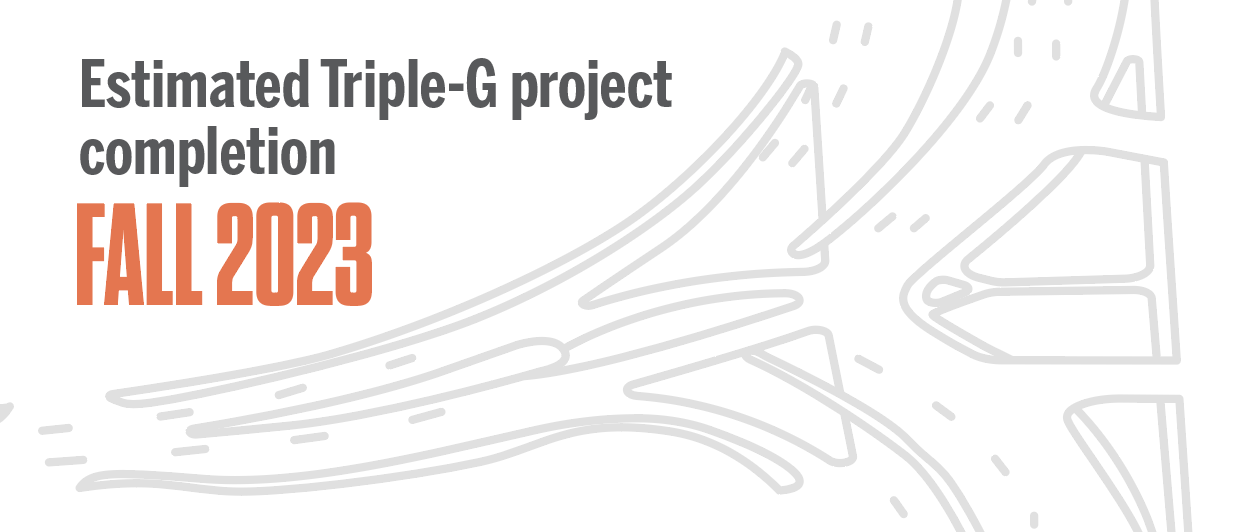
Gaston Avenue, Abrams Road and Ferguson Road are neighborhood arteries. Instead of blood clots, transportation professionals must address issues of traffic congestion, speeding and crashes. Left unchecked, the cells — drivers — could cause a heart attack.
Blackmon says a consultant has reviewed a list of improvements along Ferguson Road between Loop 12 and I-635. The list covers items such as replacement of four traffic signals, improvements at 19 intersections and updated lighting and signs. That list is being refined and, when completed, will be shared with Blackmon’s office, as well as other relevant council members, before a period of public input.
For much of the past year, the consultant also has been considering data, existing infrastructure and potential improvements along Ferguson from I-30 to Loop 12, Blackmon says.
As far as a study of the Abrams Road corridor, Blackmon says she expects a contract to be put in place with a consultant in the coming months.
The Dallas Department of Transportation hosted a community meeting in July to discuss recommendations for the Gaston Avenue corridor, a 3.7-mile stretch from Washington Avenue near Baylor Hospital to the Gaston-Garland-Grand intersection.
Proposed improvements throughout the corridor included traffic signal upgrades, better sidewalks and dedicated turn lanes. Members of the public had the opportunity to respond to the proposals in an online survey, which was open for several weeks.
A spokesperson with the City of Dallas says staff are finalizing recommendations and developing cost estimates and an implementation plan. The stakeholder steering committee for the project, made of residents appointed by council members, will be able to review the proposed plan before it’s finalized, and that will happen later this spring or early summer.
![]()
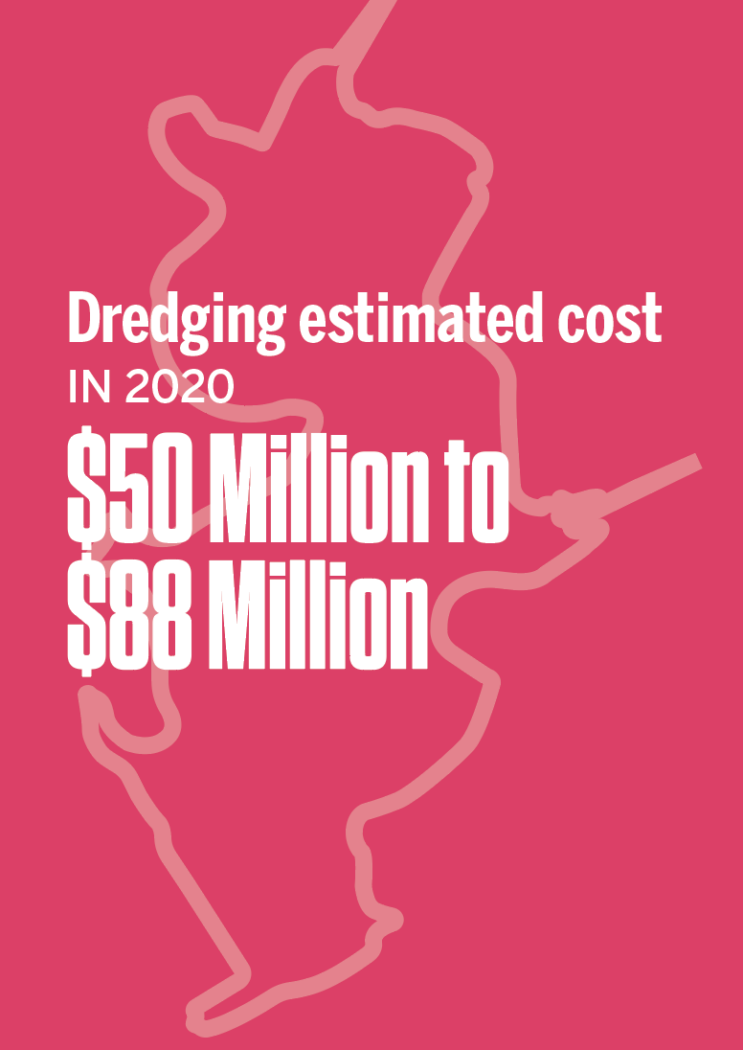 White Rock Lake needs a good dredge, and over the past few months, the city has been taking steps to make that happen.
White Rock Lake needs a good dredge, and over the past few months, the city has been taking steps to make that happen.
Last fall, during a meeting where Blackmon wore a beaver outfit decorated with trash commonly found in the lake, the City Council approved a contract with an outside firm to conduct engineering design services. After a kickoff meeting between the city and consultant Freese and Nichols, the firm has 18 months to provide the study and be 30% complete on conceptual drawings.
But the city still has to find a way to pay for the whole thing.
Primary sources of funding being considered are the 2024 bond and federal and state dollars. The dredging feasibility study from 2020, also completed by Freese and Nichols, estimated that the cost would be $50 million to $88 million.
Dredging can’t begin until the engineering design is complete and funds are identified, so that means we’ll be waiting until 2024 or 2025.


